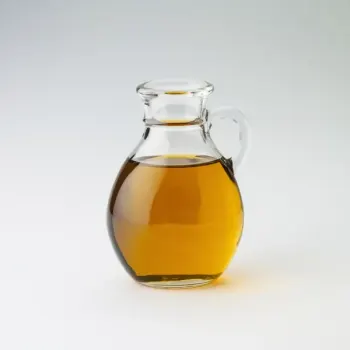Mirin and Vinegar are versatile cooking ingredients, with mirin being a sweet Japanese rice wine and vinegar a sharp, acidic liquid used for flavor and preservation in various dishes.

Mirin is a sweetened Japanese rice wine, integral to many Japanese dishes. It has a syrupy texture and a complex flavor profile that combines sweetness with a subtle hint of umami.

Vinegar is a liquid produced from the fermentation of ethanol, yielding an acidic taste. It comes in various types including balsamic, apple cider, and white vinegar, each adding a distinct sharpness to dishes.
Mirin and Vinegar differ in their core ingredients, production processes, and flavor profiles. Mirin is sweet with a lower acidity level, while vinegar is predominantly acidic and can range from sweet to savory to tangy.

Your ultimate Recipe Box, Meal Planner, and Cooking Class all in one
Mirin is best used in teriyaki sauce, sushi rice, and glazes. It adds a delicate sweetness and gloss to dishes. For the perfect teriyaki sauce, simmer equal parts soy sauce and mirin until reduced. Vinegar shines in pickling, dressings, and dipping sauces. Rice vinegar is essential for authentic sushi rice, adding sharpness and flavor. When pickling vegetables, use a vinegar with higher acidity for preservation.
Mirin is excellent for meat and seafood marinades, its sweetness helping to balance saltiness and mellow out stronger flavors. For a simple yet delicious marinade, mix mirin with soy sauce and a touch of sesame oil. Vinegar is a key component in many Western marinades, tenderizing meat and adding zest. Balsamic vinegar, in particular, can create a rich, complex marinade for beef or vegetables.
In dressings, mirin offers a subtle sweetness that complements ingredients like sesame oil and soy sauce. It can also be used to add depth to sweet and sour sauces. Vinegar's acidity is perfect for vinaigrettes, mayonnaise, and mustard-based sauces. Apple cider vinegar can create a tangy, fruity dressing for salads or slaws.
Mirin is higher in sugar and calories, while vinegar typically contains no sugar and few to no calories.
| Nutrient | Mirin ( per Tablespoon ) | Vinegar ( per Tablespoon ) |
|---|---|---|
| Fat | 0g | 0g |
| Sodium | 0mg | 0mg |
| Protein | 0g | 0g |
| Calories | 40 | 3 |
| Carbohydrates | 9g | 0g |
Vinegar can be used as a substitute for mirin if you add a sweetener to reduce the acidity.
Mirin and rice vinegar are both made from rice, but mirin is sweeter and has a lower acidity level.
A combination of rice vinegar (or another sweet vinegar) and sugar can be used to replicate mirin's flavor.
Mirin adds a rich, sweet flavor with a hint of umami, perfect for balancing savory dishes.
Mirin is primarily used as a cooking ingredient to enhance and balance flavors in dishes.